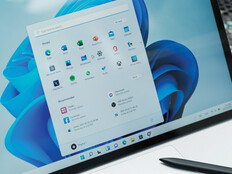The Flaws of Conventional College Transcripts
The changing needs of students are forcing universities to explore new ways to document the academic journey. Timothy Summers, executive director of product development at ASU, understands that while transcripts and resumes are traditional benchmarks for learning and working, they often fail to showcase a person’s entire skill set.
Additionally, these benchmarks do not provide significant details about completed coursework, internships or unique experiences that can better display a student’s qualifications for a certain role in the workforce.
Beyond the impact on future employment, conventional academic documentation does not facilitate a seamless transition between institutions. “A third of our college students are actually going to be transferring credentials from one institution to another when they’re seeking their degree,” Davis said at the webinar.
LEARN MORE: About the technologies colleges need to support modern students.
Rethinking the College Transcript with Distributed Ledger Technologies
ASU is working on a technology to document the educational journey — both during and after college. ASU already uses MyPath to help transfer students map the courses they need to take to achieve their degrees.
In addition to MyPath, ASU introduced Pocket during the EDUCAUSE panel. While MyPath focuses on degree requirements, Pocket aims to map a student’s path beyond graduation. Even as graduates enter the workforce, Pocket will continually store their achievements throughout their lives, helping to support each career move.
As Summers explained, “Pocket is a digital wallet and portfolio that empowers learners to capture the evidence of their learning, no matter the format.” Students update their digital records through the app, making the re-enrollment and transfer process much easier. Additionally, these records provide extensive details for future employers.
Pocket has two primary components. “The back-end platform is designed for organizations to issue and verify credentials,” Summers said. “And the Pocket app, which learners use as their digital wallet and portfolio, is where they’re going to capture and share all their credentials.”
The app is based on a technical stack enterprise infrastructure for distributed ledger technologies. Summers notes that ASU used Hyperledger Indy and Aries to leverage open-source technologies as much as possible. This supports interoperability, security and privacy — while lowering the barrier of entry to join Pocket.
Finally, Pocket embraces the concept of self-sovereign identity. SSI gives users control over their digital identities and moves away from traditional account-based identities. This step toward digital wallets and digital credentials also enhances privacy and security.
Pocket’s decentralized technology lets users capture their credentials and update their degree progress, certifications, internships and experiences in real time. This way, both current and former students can easily document and share their educational journeys right from their Pocket.











